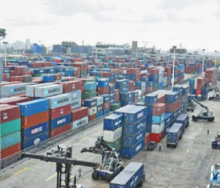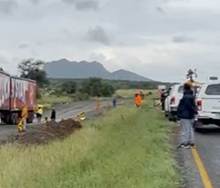A growing threat to the world’s food security has been highlighted this week by analyses of the impact of stressed water supply.
Recently, a National Food and Nutrition Security survey determined that 63% of South Africa’s households were food insecure, with 17% critically undernourished.
Bloomberg reports that according to the World Resources Institute (WRI), climate change and rising competition for resources mean that one quarter of all crops are grown where water supply is either highly stressed or highly unreliable, or both.
While farmers have been able to adapt to a certain extent, producing crops in these areas puts food supplies in jeopardy, according to the WRI think tank, which is focused on climate solutions.
That’s a concern given that the growing global population may need 56% more calories in 2050 than it did in 2010. Food supplies have already been strained on multiple fronts — from erratic weather and conflict to supply chain snarl-ups and trade protectionism.
While the impact of water scarcity on food has been broadly known, the WRI aims to quantify the effects using its Aqueduct Food data platform.
A lack of water was a hidden and growing driver of hunger that affected one in every 11 people, the WRI said. Rice, wheat and corn — which make up more than half of the world’s food calories — are particularly vulnerable, with a third of those crops grown using highly stressed or variable water supplies, according to the WRI.
Another report this week also laid bare the water threat. Almost three billion people and more than half of the world’s food production are in areas experiencing a worsening water shortage, according to the Global Commission on the Economics of Water.
Water scarcity could cause high-income countries’ GDP to shrink by 8% on average by mid-century and result in a drop of up to 15% in poorer countries, it said.
Just 10 countries — including China, India and the US — accounted for 72% of the world’s irrigated crops, with two-thirds of these supplies facing high-to-extremely-high levels of water stress, the WRI analysis showed. Rain-fed crops still make up two-thirds of all output, but face erratic weather.
But water woes don’t automatically spell crisis, according to the WRI’s Liz Saccoccia and Samantha Kuzma.
Businesses and governments needed to first understand water risks using data, and set targets to align with sustainability goals, they said.
Shifting high-meat diets toward less water-intensive foods, or cutting back on food loss and waste, would help manage water more sustainably.













